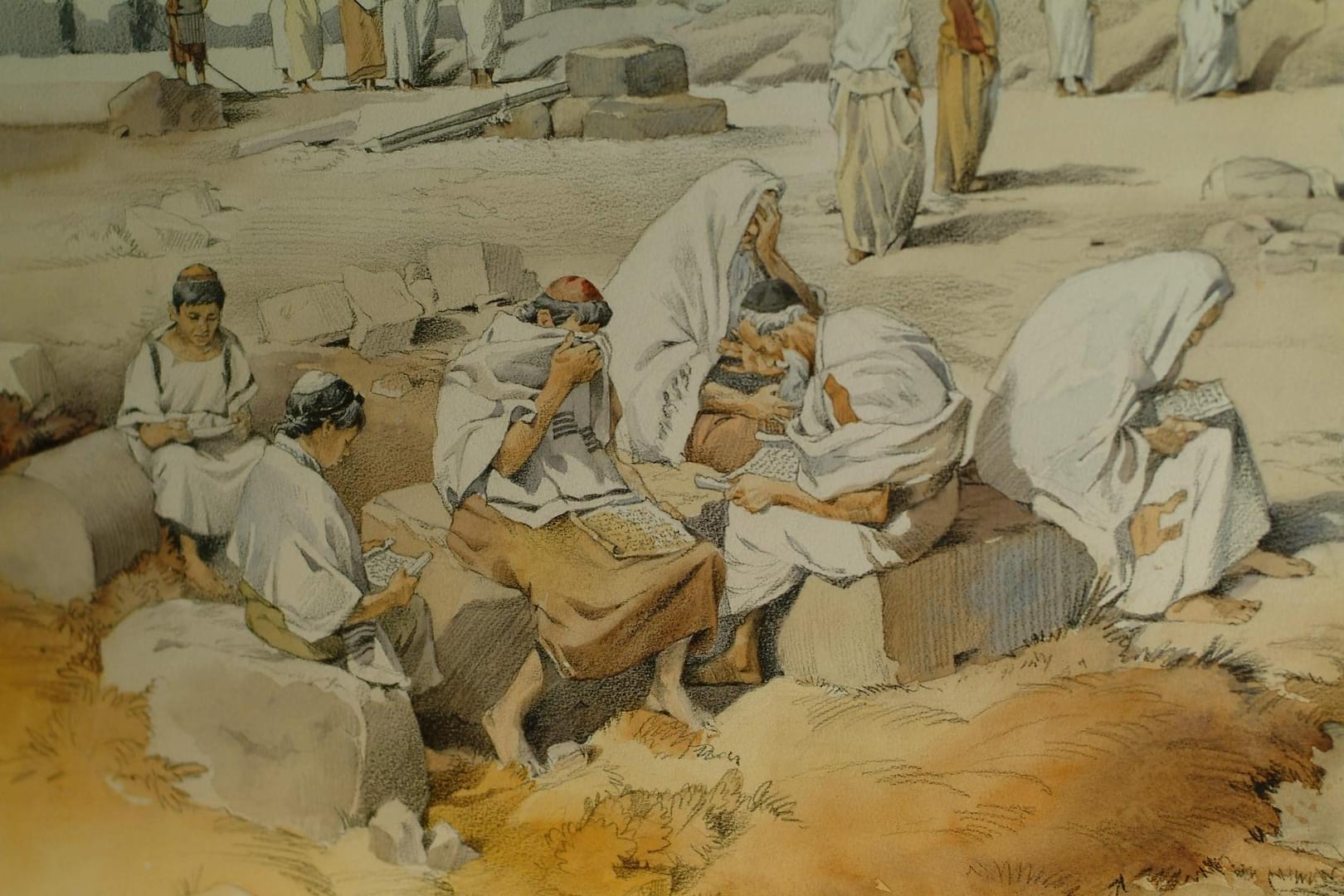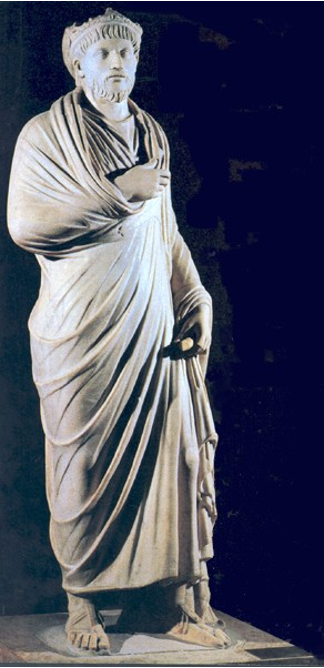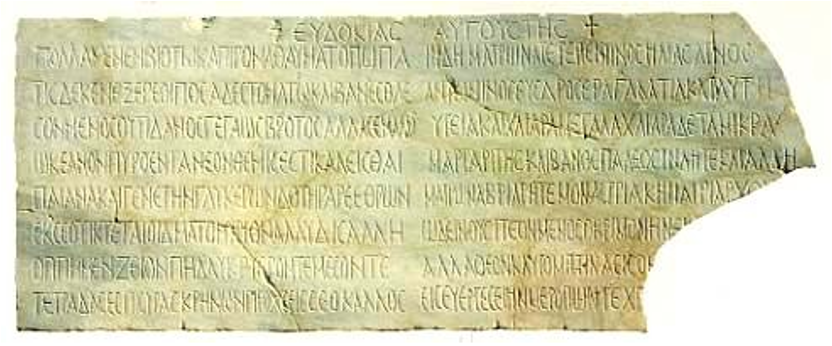300 - 600 CE
The Byzantine Period in Israel
324 CE – 637 CE
Israel Museum / Israel Antiquities Authority, Photo by Ardon Bar-Hama
The Christian Pilgrim of Bordeaux Observes Israelites and Tisha B’Av, 333 CE
Chronicon Paschale
“There are two statues of Hadrian, and not far from the statues there is a perforated stone, to which the Jews come every year (on Tisha B’Av) and anoint it, bewail themselves with groans, rend their garments, and so depart.”
This Byzantine Christian work based on earlier records also relates that Hadrian built the Temple of Jupiter, divided into three parts with statues of Jupiter, Juno and Minerva, on the site of the Temple Mount.
Madaba Map replica, Photo by Ardon Bar-Hama
Once A Year on Tisha B’Av, Constantine the Great Allowed the Israelites to Visit the Temple Mount
Tisha B'Av, the 9th of Av, commemorates the destruction of the First and Second Temple of the Jews. Latin priest and historian Jerome (342-420 CE), related that the only day on which Jews were permitted to enter Jerusalem was Tisha B'Av.
 Read more
Read moreLamenting the Destruction, Tower of David Museum
Photo by Ardon Bar-Hama
An Israelite Anticipates the Messiah, 400 - 500 CE
A letter sent by an Israelite from the Galilee in the fifth century expressed a prevailing sentiment that the redemption was near.
“Behold, the Roman kings have ordered that the gates of Jerusalem be returned to us. Speedily come up to Jerusalem for the Festival of the Tabernacles, for our kingdom is about to be rebuilt in Jerusalem.”
Source: Dan Bahat. The Illustrated Atlas of Jerusalem. The Israel Map and Publishing Company LTD, Israel, 1996. p. 75.
Oil Lamp with Menorah
Israel Museum / Israel Antiquities Authority
Photo by Ardon Bar-Hama
Synagogue Menorah from Ma'on in the Hills of Hebron, 500-600 CE
Israel Antiquities Authority / Israel Museum
Photo by Ardon Bar-Hama
created with
WordPress Website Builder .



